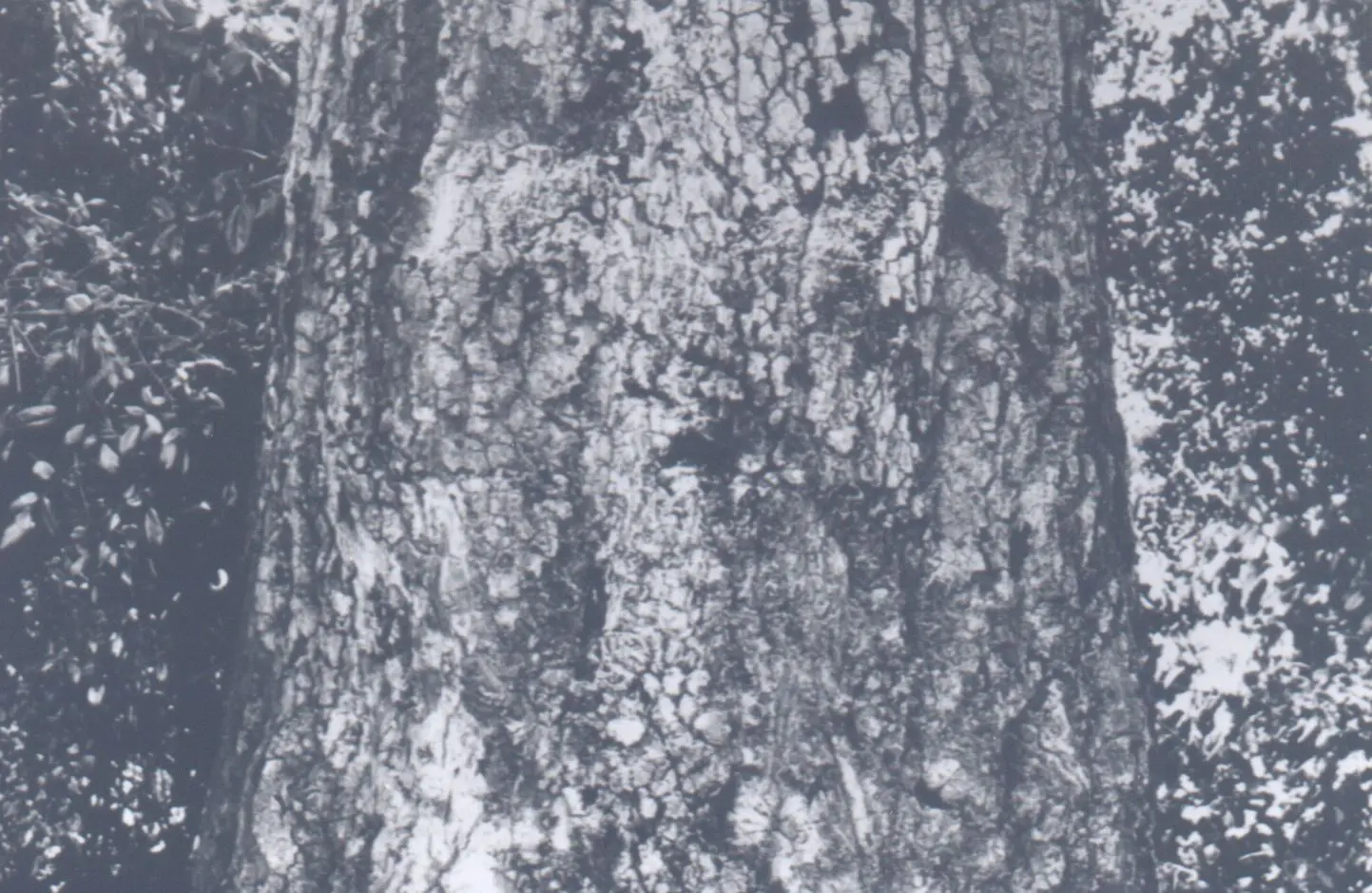
The story of Catholicism in South Pasadena predates our beloved church. Monterey Road, just north of Rollin St., served as a vital connection between Mission San Gabriel and the emerging settlement of Los Angeles. Along the Arroyo, a humble cross carved into the bark of a towering oak—known as the Cathedral Oak—marked the site where Mass was celebrated during Gaspar de Portolá’s land expedition from San Diego to Monterey between 1768 and 1770.
The first recorded Mass in what is now South Pasadena was celebrated by one of two Franciscan chaplains, either Fr. Francisco Gomez or Fr. Juan Crespi, who accompanied the Portolá expedition. To honor this sacred beginning, on the 75th anniversary of the church’s dedication in 2003, an oak tree was planted at that very site—a living reminder of faith sown centuries ago. More than a century after that first Mass, in 1906, land was purchased to establish a Catholic church. Bishop Thomas J. Conaty entrusted Rev. Richard J. Cotter, D.D., with founding
Our origins were faith-filled.
On May 10, 1910, seventy-five families gathered with Fr. Cotter for worship in a modest cottage at the El Centro and Fremont location. Together, they called themselves Holy Family Parish. At the time, parish boundaries extended from Columbia Ave. to the north, Alhambra Rd. to the south, Garfield Ave. to the east, and Arroyo Dr. to the west.
Our origins were prophetic.
By August of that same year, a temporary “bungalow church” was erected to serve the growing congregation. It stood as a testament to hope and perseverance, a temporary shelter for worship until funds could be raised for a lasting sanctuary—a “handsome edifice” that would welcome future generations to this thriving community.
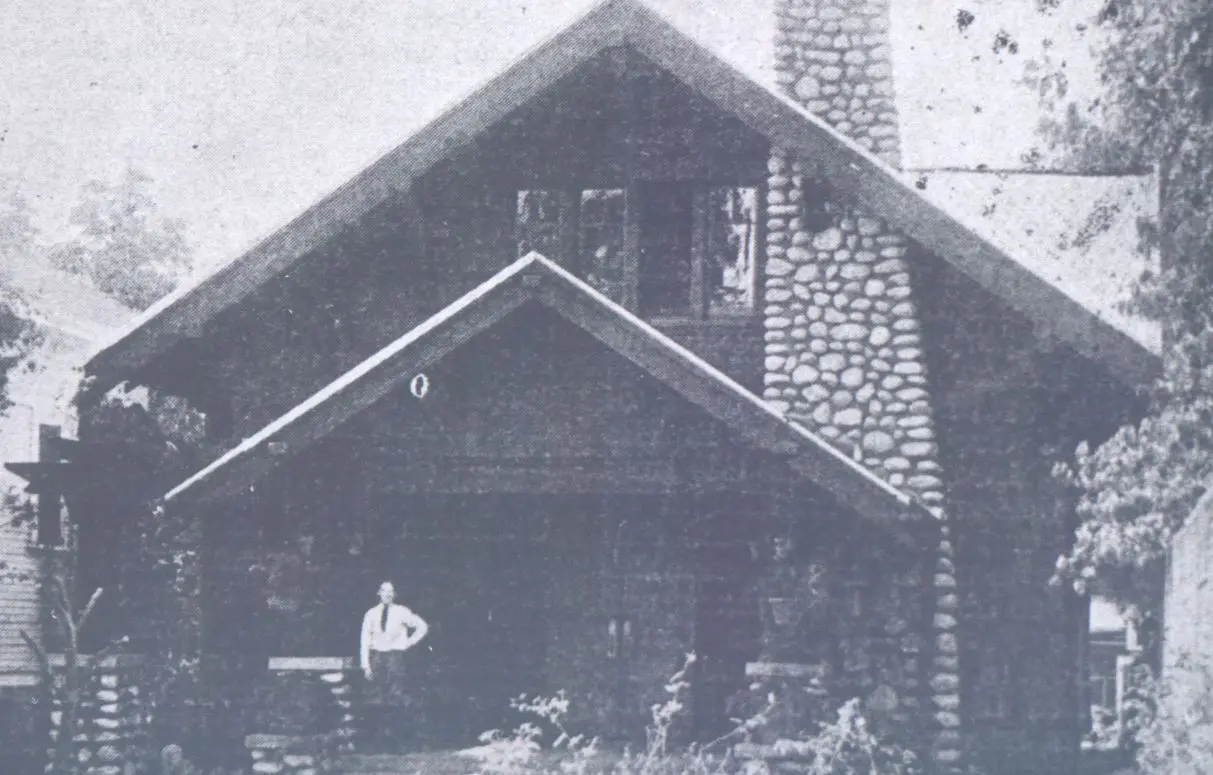
Our origins were courageous.
On November 24, 1923, the parish acquired the property at Fremont Ave. and Rollin St.—the site of our current church. The original building at El Centro was relocated to this new site, serving as a place of worship until the construction of the permanent church was completed.
In 1926, Fr. James B. Morris, whose plaque now graces the church vestibule, was appointed to raise the necessary funds for the new church. Against the backdrop of the Great Depression—the most challenging economic period in American history—a dedicated community of just three hundred families rallied together. Through bazaars, barbecues, dances, and card parties, they raised the funds needed to build what stands today as a beacon of faith and sacrifice.
Construction began in 1927 under the direction of architect Emmett G. Martin and the Charles W. Pettifer Company. The church, an extraordinary example of Spanish Renaissance Baroque architecture, rose as a symbol of devotion and determination.
On January 8, 1928, Rt. Rev. Joseph J. Cantwell, bishop of Los Angeles and San Diego, led a solemn procession from the cottage church on El Centro Ave. to the new church on Rollin St. There, he blessed the altar, cross, and cornerstone. Easter Sunday of that same year saw the first Masses celebrated within its walls—Solemn Masses at 6:00 a.m. and 10:30 a.m., and Low Masses at 8:00 a.m. and 9:00 a.m., all officiated by Fr. Morris.
Two weeks later, on April 22, 1928, Bishop Cantwell formally dedicated the new church building—a testament to the faith, sacrifice, and unwavering spirit of its founders.
Today, our church remains a cherished landmark, its walls echoing the prayers and hopes of generations past and standing as a beacon of faith for those yet to come.

Our origins were provident.
In 1937, the parish elementary school opened its doors, marking a new chapter of growth and foresight. Properties were gradually acquired to meet the expanding needs of the parish, including a parish hall, offices, and spaces for religious education. South Pasadena’s population had more than doubled since the days of the “bungalow church,” and Holy Family adapted to serve the flourishing community.
In May of 1937, Holy Family moved forward with plans for a parish hall, and the Sisters of Loretto at the Foot of the Cross assumed charge of Holy Family School. Faith formation, then known as the Confraternity of Christian Doctrine (CCD), was initially led by two religious women. In 1938, a laywoman named Katheryn McColgan stepped in as the director, marking another step toward community involvement and leadership.
By 1950, as the church building approached its 25th anniversary, new additions graced its sacred space. Two mahogany side altars, crafted by C. M. Gilbride, were installed—one dedicated to St. Joseph and the other to Mary. In 1951, magnificent murals were added: one depicting the death of St. Joseph and the other celebrating the Assumption, both painted by the father-daughter team Hector and Judith Serbaroli.
Memorable stories emerged from this period. Fr. Collins, who arrived at Holy Family in June of 1950, recalled his first day: “I arrived on Saturday, June 3rd, and on Sunday, I was handed the keys and told by the pastor to mind the fort for a week…” His humorous tales and commitment left lasting impressions on the parish.

The idea of stained glass windows was discussed for many years before finally coming to fruition. In 1962, parishioners selected beloved saints to be depicted. The windows, crafted by Michael H. Jaubert Studio in Paris, were installed by 1964, adding beauty and reverence to the sacred space.
One of Holy Family’s longest-serving and most devoted employees was Tillie Mazzetti Faille. She began as a volunteer and, in 1966, became the church secretary, serving with dedication for over 30 years.
Holy Family’s journey is one of faith, foresight, and unwavering community spirit—a legacy that continues to inspire those who worship here today.
The 1960s ushered in significant reforms to the Catholic liturgy, inspired by the landmark documents of Vatican II. In 1968, a teenager named Tony Azeltine began directing the guitar Mass—a role he still joyfully fulfills more than half a century later. Around the same time, Bud Johnson composed the musical setting for Holy Family’s own “Our Father,” a melody that remains a cherished part of worship today.
The liturgical changes spurred the remodeling of Holy Family’s sanctuary during the 1970s. The communion rail was removed, and the sanctuary floor was elevated to enhance visibility from the back of the church. The reredos was gilded with gold leaf, and the statues of St. Patrick and St. Columbkille were refurbished and returned to their niches. A new tabernacle found its place in the south transept. Additionally, laypeople began to be commissioned as Eucharistic Ministers—a reflection of the Church’s broader call for lay participation.

The 1970s also saw physical expansion. A new rectory, complete with offices, was built on Rollin Street. In 1977, the parish acquired the Oak St. House to accommodate the religious education program. Later, in 1984, the Ramona St. House was purchased and transformed into the retirement residence for Cardinal Timothy J. Manning. This expansion continued in 1988 with the acquisition of two more residential properties.
The 1980s brought about transformative changes. Holy Family School bid farewell to the Sisters of Loretto at the Foot of the Cross, transitioning to a lay faculty. Virginia Sullivan became the first non-religious principal of the school. In 1981, young couples began gathering to support one another through the early years of marriage, while a lector group formed in 1982 to practice proclaiming the Word of God at Sunday Masses.
In 1985, the parish celebrated its 75th anniversary with festivities chaired by Mark Whitney. The celebration culminated with a Mass presided over by Cardinal Manning, who served as the celebrant and homilist. It also marked the beginning of new clergy leadership, including Msgr. Clement Connolly, Fr. Leon Hutton, and Fr. John Schiavone. During this period, Vacation Bible School became a staple of summertime, ending each year with a play written by Gail Fabbro and Tony Azeltine. Under the leadership of Julie Smith, the DRE, children proudly marched in the South Pasadena Festival of Balloons Parade on the Fourth of July.
The new Pastor, Msgr. Connolly soon appointed Karl Holtsnider as Parish Administrator. Karl’s expertise in administration, facility construction, pastoral leadership, and financial affairs proved invaluable. Reflecting on their partnership, Msgr. Connolly shared, “Karl made me look good. He was the anchor—the prophetic vision that made so much happen.”
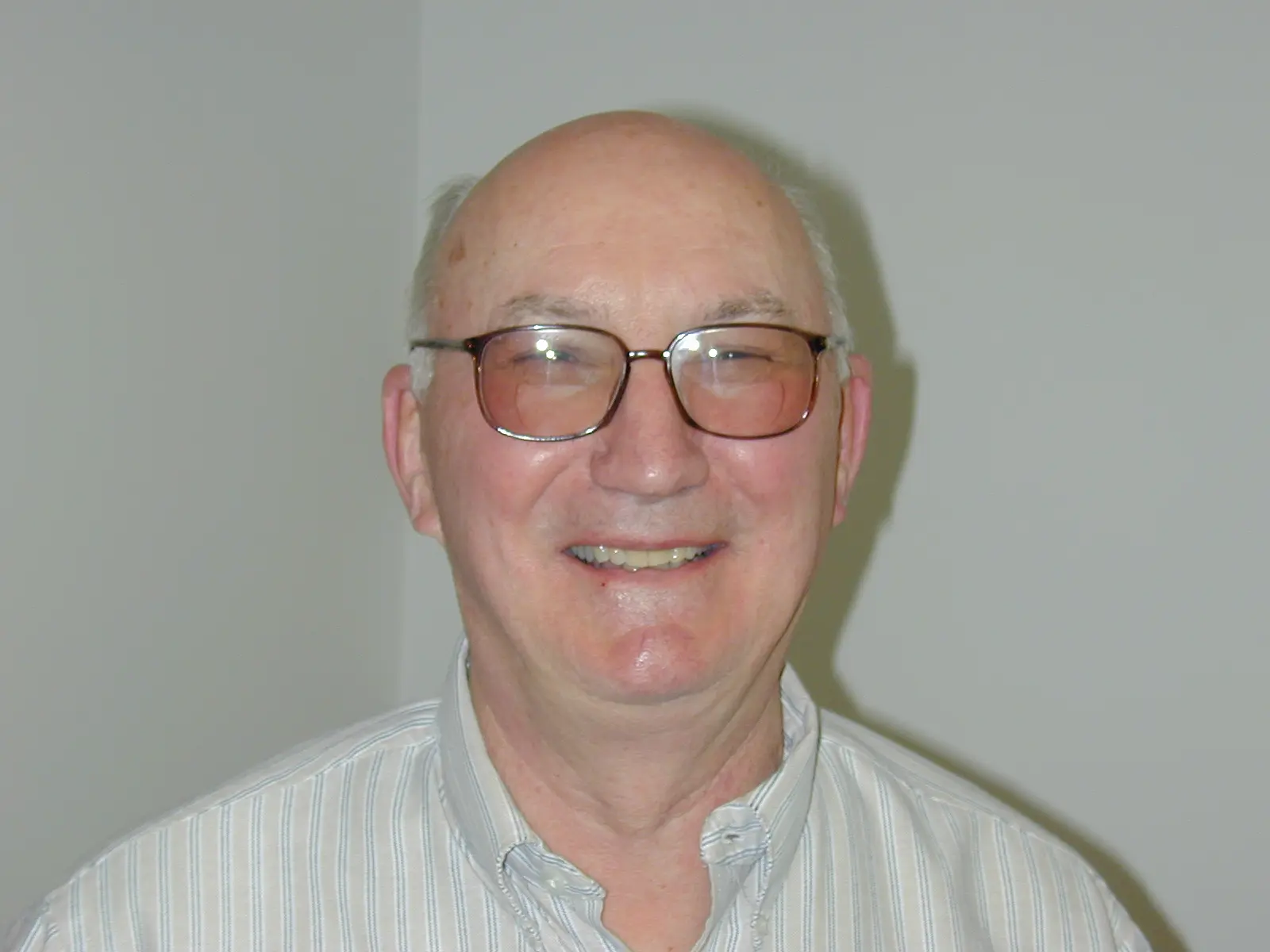
By 1994, Holy Family was “bursting at the seams,” prompting the community to dream bigger. Parishioners gathered to envision the future, resulting in the Vision Project—an ambitious plan to create a new ministerial campus. Around this time, the Christian Science Church and Reading Room across Fremont became available for purchase. With Cardinal Mahony’s approval, Holy Family secured a $3.2 million loan from the Archdiocese, and Karl Holtsnider spearheaded the Vision Project. The challenge was to remodel, relocate, or rebuild nearly everything except the church itself. Led by Ted Shaw and Gina Osti, a capital campaign raised the necessary funds. Parishioners responded with generosity and commitment, and on May 25, 1997, the City Council granted final approval of the Master Plan. Groundbreaking ceremonies followed on June 7, 1997.
Throughout this decade of transformation, Holy Family Church saw remarkable improvements. Wayne’s coating and an upgraded sacristy were added, and the Schoenstein & Co. was commissioned to replace the choir loft organ. The organ pipes were relocated to reveal the stunning rose window. The former Christian Science sanctuary across Fremont became St. Joseph Center, a vibrant space for meetings, assemblies, and the Giving Bank. Adjacent to St. Joseph’s, the remodeled assembly room—now called Eden—was designed to serve the needs of youth ministry, Confirmation programs, and various administrative offices.


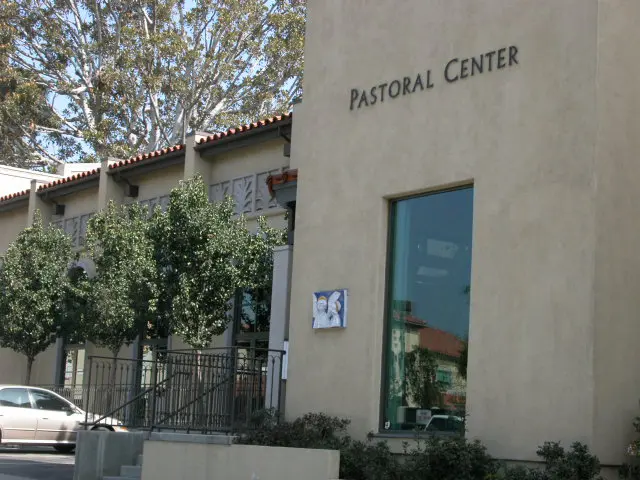
Further growth included the purchase and relocation of the Oak St. House to make room for the Pastoral Center, which would later be renamed the Holtsnider Pastoral Center in honor of Karl Holtsnider’s enduring contributions.

Named in honor of our beloved pastor, Msgr. Clement Connolly—whose tireless fundraising efforts were instrumental in bringing the Vision Project to life—the Connolly Parish Hall stands as a testament to community spirit and commitment. Thoughtfully designed, the hall mirrors the aesthetic charm of its predecessor with features like the iconic open-beam ceiling, paying homage to the original structure that had long been a gathering place for the faithful.
In addition to its architectural nod to tradition, the Connolly Parish Hall is equipped with state-of-the-art amenities, including a high-quality sound system, advanced lighting, and the capability to support video presentations. These enhancements ensure that the space not only preserves the spirit of Holy Family’s past but also meets the modern needs of worship, celebration, and community gatherings. Since its dedication, the hall has hosted countless events, from parish meetings and community celebrations to outreach activities that serve the broader South Pasadena community. Through its welcoming doors, generations continue to come together, reinforcing the legacy of faith, fellowship, and forward-thinking that Msgr. Connolly so passionately championed.
The spirit of creativity and expansion continued with Pam Danni’s introduction of the Parish Auction, an event themed around dreaming for children and the broader parish community. This annual tradition has since raised hundreds of thousands of dollars to support Holy Family’s ministries.
Msgr. Connolly and Karl Holtsnider also recognized the need for quality religious art and meaningful reading materials, leading to the founding of the Holy Family Bookstore. Under the careful management of Anne McGann Yee, the bookstore has flourished, becoming a destination for people from across the Archdiocese of Los Angeles, admired for its beautiful selections and spiritually enriching literature.
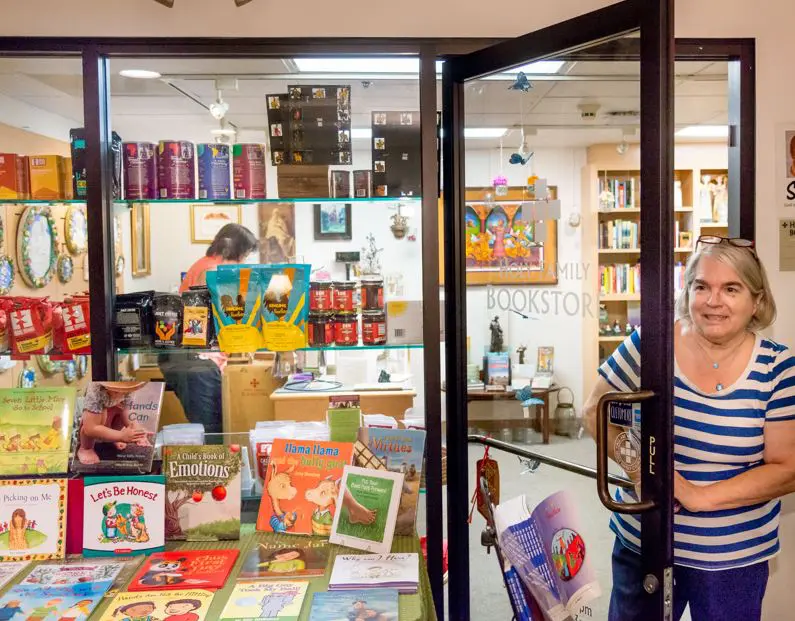
Upon completion of the Vision Project, Karl Holtsnider and Msgr. Connolly looked beyond parish borders, launching Mission Haiti. Karl believed that showing people the needs of others was a powerful way to inspire action. Each year, a compelling video is produced to share the struggles and hopes of the Haitian people with Holy Family parishioners, fostering a spirit of global solidarity.
The parish celebrated the completion of the Vision Project in 2000, but the end of construction marked a new beginning. Holy Family embraced the call of the Second Vatican Council, which presented a transformative theology of the laity. Inspired by the universal call to holiness found in Lumen Gentium, Holy Family began to cultivate lay ecclesial ministry—a vocation of full-time Church service grounded in community needs.
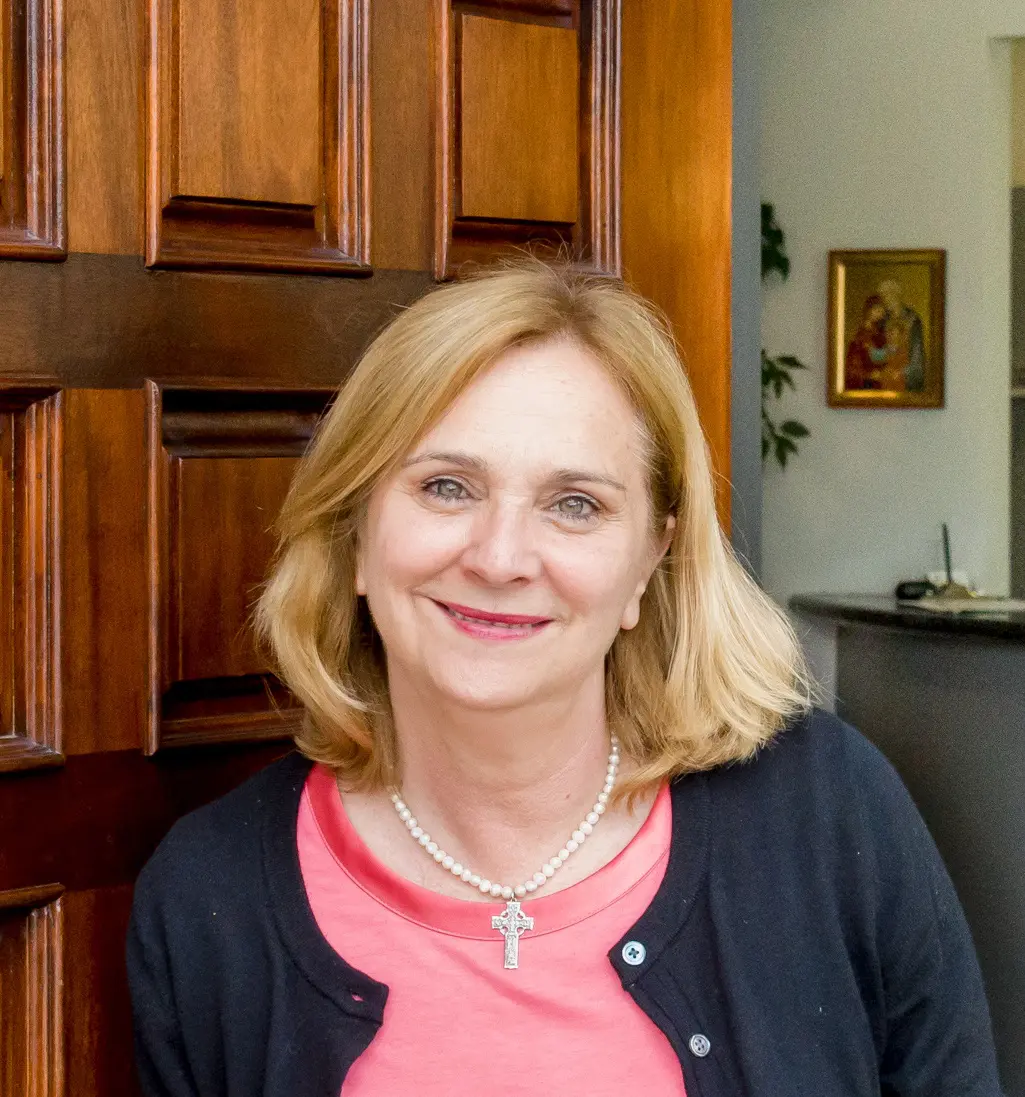
As part of this evolution, Holy Family undertook a prayerful search for a lay leader to serve as Parish Life Director. On July 1, 2009, that vision became reality when Cardinal Roger Mahony accepted the resignation of Msgr. Clement Connolly and appointed Cambria Smith as the Parish Life Director. During Cambria’s twelve-year tenure, the parish flourished in lay leadership and spiritual growth. It was also during this time that Jay Krueger and his wife Candy completed a five-year journey to the diaconate, further enriching Holy Family’s ministry.
Under Cambria’s visionary leadership, we expanded our property holdings significantly, strategically acquiring several properties not only to generate steady income but also to support the growth and mission of our community. Among these acquisitions was the remarkable property located at the corner of Oak and Ramona, which now serves as our beautiful and welcoming rectory—a place of hospitality, reflection, and service. This important addition symbolizes our commitment to fostering a strong foundation for ministry and outreach in the heart of our community.
In 2010, Holy Family launched a year-long celebration of its 100th anniversary. Worship Director Frank Ponnet led an effort to reconnect with parishioners baptized at Holy Family, inviting them to bring in baptismal records where their names were first inscribed. Reflecting on the Centennial, Msgr. Connolly remarked, “We have gratefully inherited the courage, the faith, and the vision of those who went before us—a tribute to the generosity, belonging, and faith of yesterday’s people that comes alive in our community today. This inspires us to believe that, through the power of the Holy Spirit, great things are yet to come.”
As part of the Centennial celebrations, the niche facing the parking lot was finally filled. Tomasz Misztal was commissioned to sculpt “The Beloved Disciple.” Though traditionally associated with St. John, the statue was designed to allow each person to see themselves as a disciple of Christ, called to holiness and service in building God’s Kingdom.
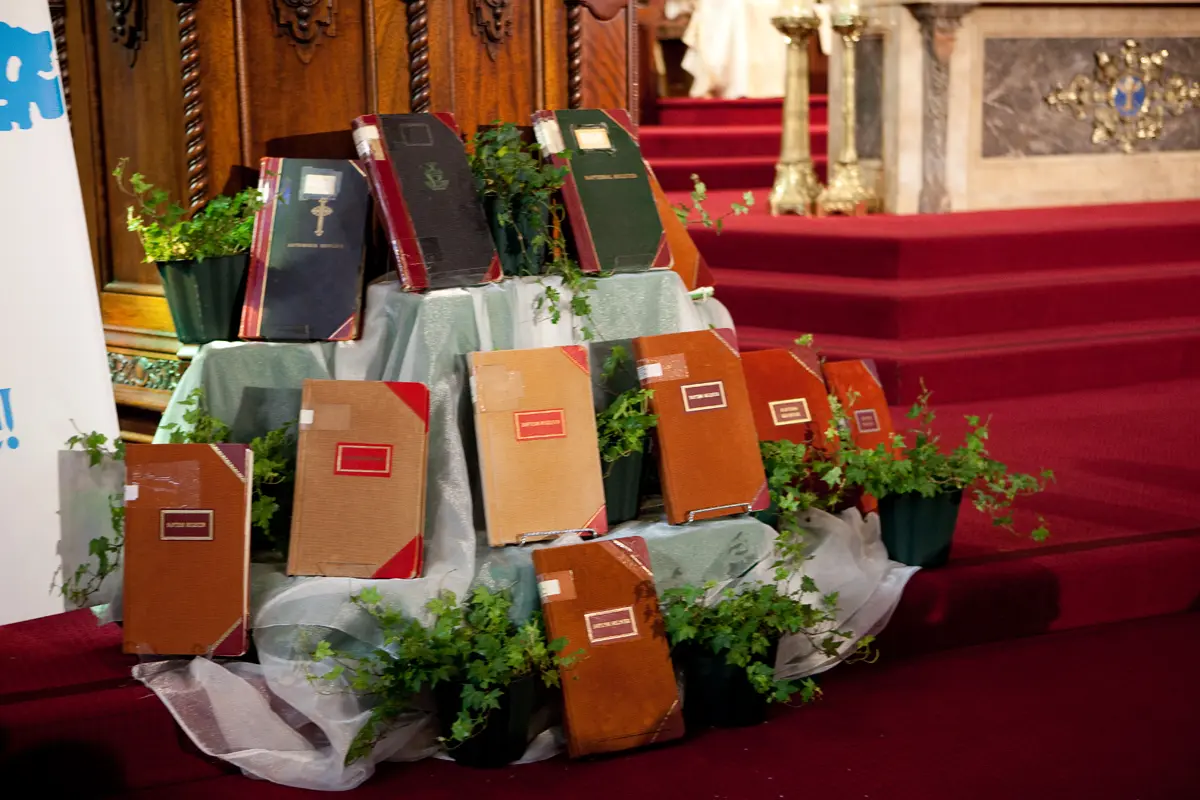
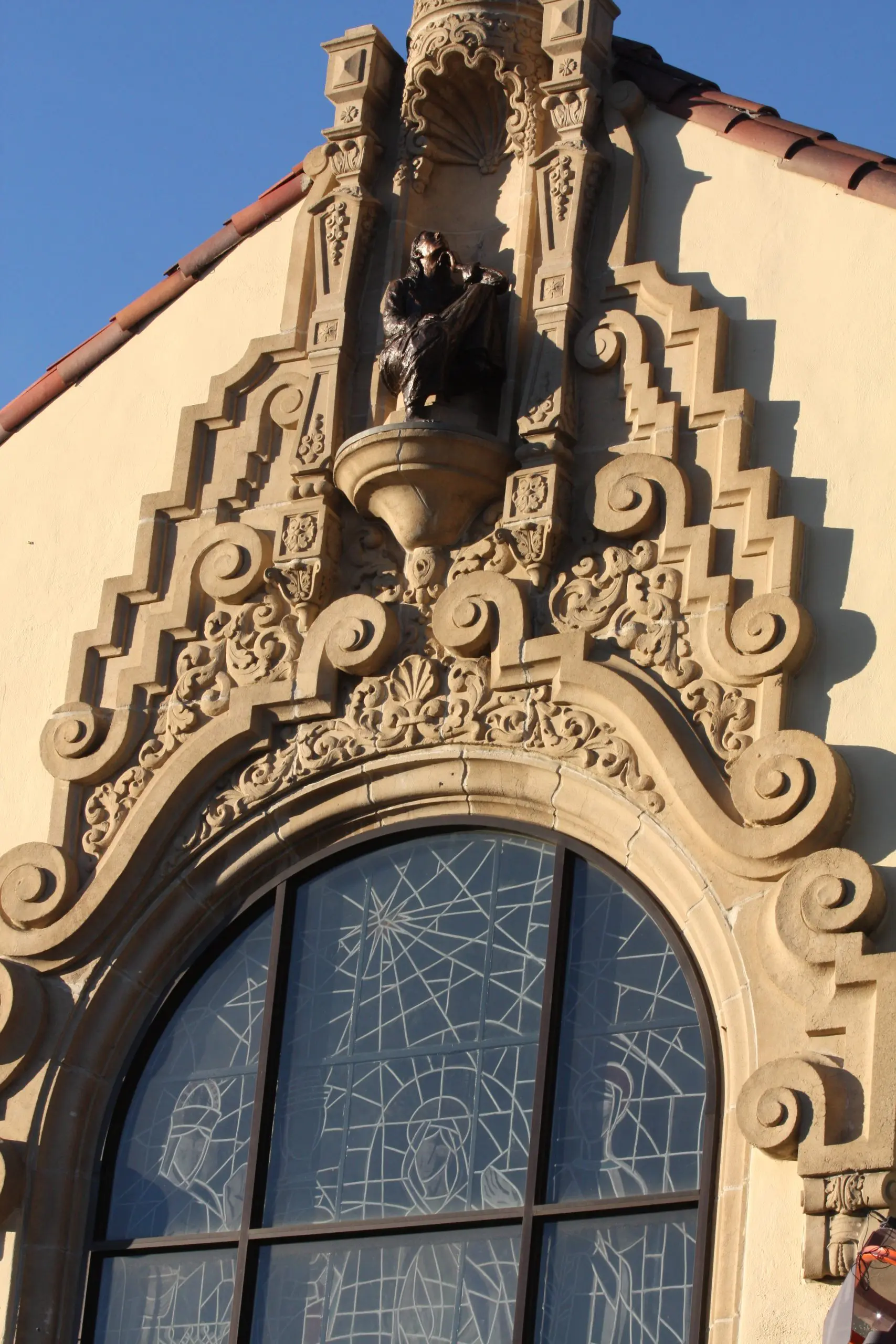
In 2021, Cambria Smith Tortorelli concluded her term, and Fr. Albert Bahhuth became pastor. His leadership focused on rebuilding the parish community in the wake of the COVID-19 pandemic. Fr. Albert also launched a three-phase capital plan to improve Holy Family’s facilities. Under his guidance, significant progress was made in enhancing the Educational Center. However, his tenure was cut short when Pope Francis appointed him Auxiliary Bishop of the Archdiocese of Los Angeles.
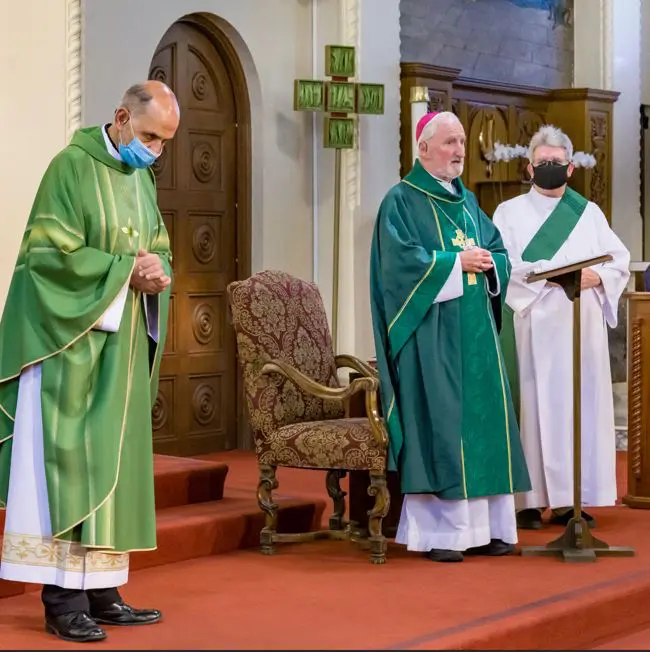
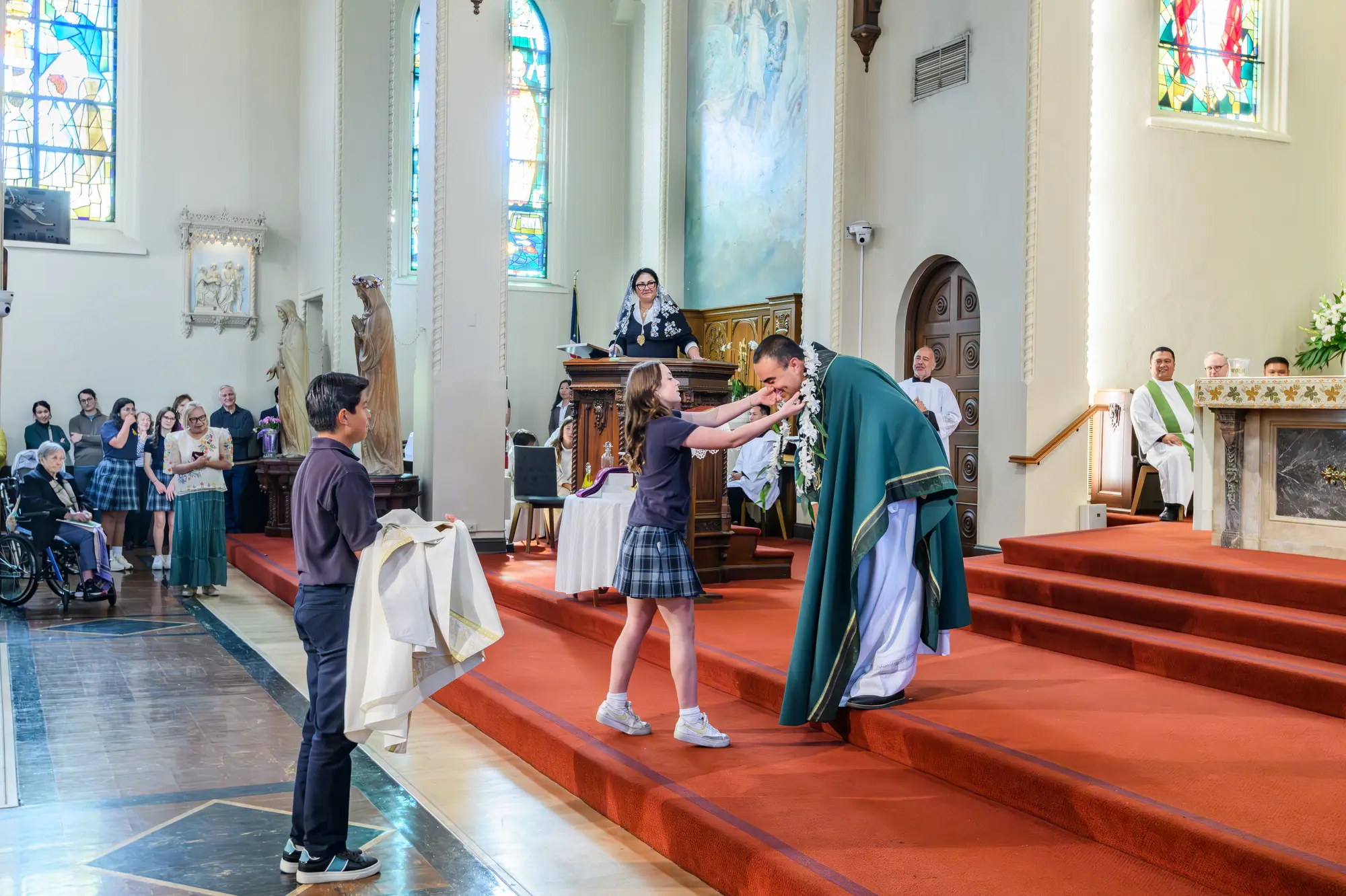
With Fr. Albert’s elevation, Fr. Ricardo Viveros stepped in as Administrator and later as Pastor. His leadership saw the completion of the first phase of improvements to the Educational Center and the initiation of crucial seismic retrofitting for Holy Family Church, ensuring its safety and resilience.
As we move forward, Holy Family stands at the threshold of continued growth and transformation. Like the faithful who came before us, we are building a legacy for the generations to come. We remain rooted in faith—prophetic, courageous, and provident—as disciples striving to deepen our personal relationship with Jesus Christ, growing in prayer and inviting Him into our lives as Lord and Savior.
Holy Family Pastors/Parish Life Directors
Rt. Rev. Michael J. Galvin 1922-1923
Rev. James B. Morris 1926-1954
Rt. Rev. Leo Joseph Murphy 1954-1971
Rev. Msgr. Thomas McGovern 1968-1984
Rev. Msgr. Clement J. Connolly 1984-2009
Cambria Smith Tortorelli 2009-2021
Fr. Albert Bahhuth 2021-2023
Fr. Ricardo Viveros 2023-present
